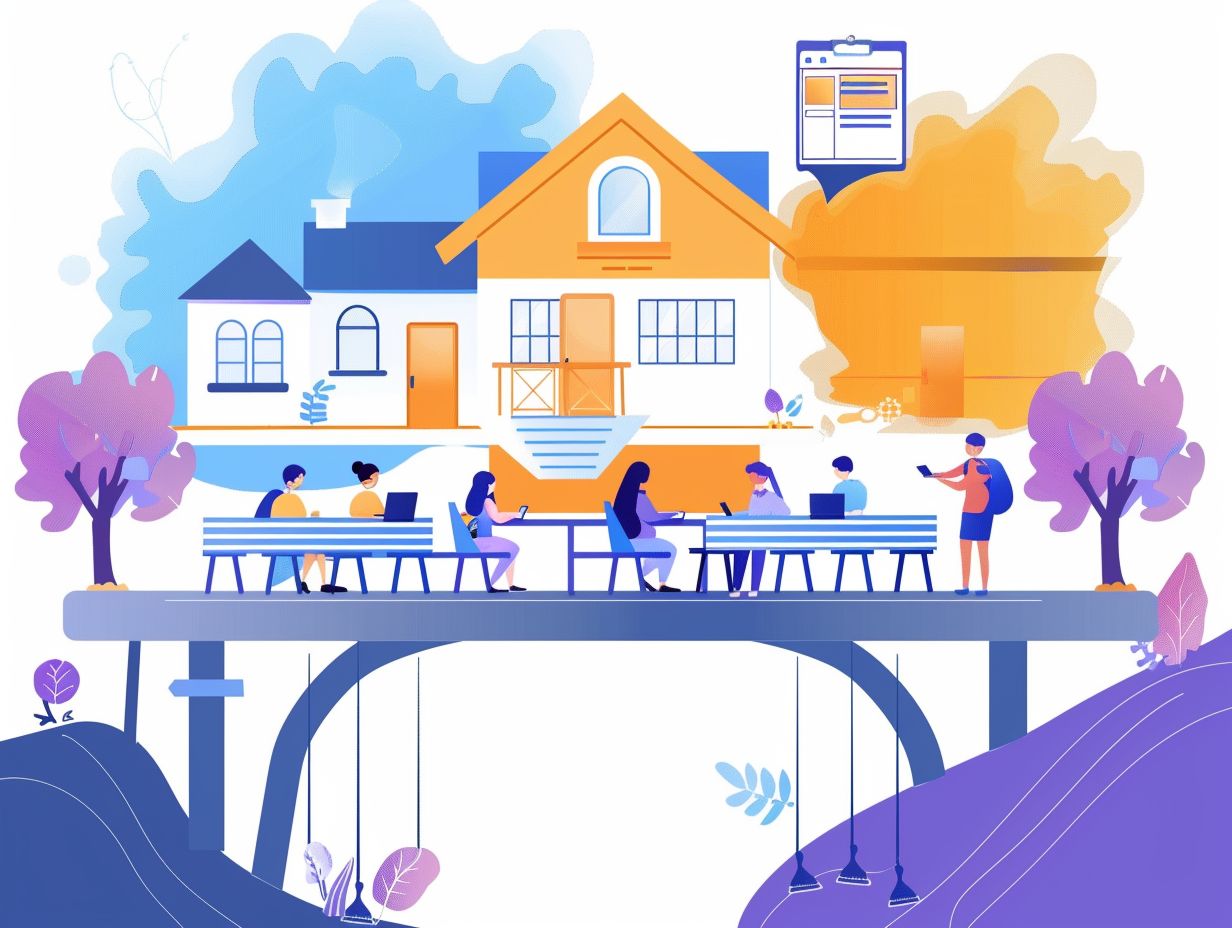In today’s ever-evolving educational landscape, the importance of practical experience in education is more evident than ever. As a student or employer, you likely recognize the benefits of hands-on learning opportunities. Meanwhile, challenges posed by online education, like the absence of practical experience, are becoming increasingly apparent to you. Fortunately, there are strategies and tools at your disposal to integrate practical experience into online learning. By implementing best practices and effective assessment methods, you can bridge the gap between theory and practice in the online classroom, creating success stories and overcoming obstacles.
Key Takeaways:

- Practical experience is crucial in education, benefiting students and employers alike.
- Online education faces challenges in providing hands-on learning opportunities.
- Strategies, tools, and real-life examples can successfully bridge the gap between practical experience and online learning.
The Importance of Practical Experience in Education
The importance of practical experience in education cannot be overstated, as it plays a pivotal role in shaping the knowledge and skills of students. The practical application of theoretical concepts through hands-on learning activities not only enhances understanding but also allows students to experience real-world scenarios in virtual environments and simulations. The integration of technology in distance learning has revolutionized the education sector, providing students with interactive platforms to engage with course material creatively. Educators, too, benefit greatly from utilizing education technology, as it allows them to tailor lessons to individual student needs and provide real-time feedback. The use of online resources and tools enables both students and educators to stay connected, collaborate effectively, and access a wealth of information at their fingertips.
Benefits for Students and Employers
The benefits of practical experience in education extend to both you as a student and your potential employers.
- You can develop critical thinking and problem-solving skills by applying your knowledge in real-world situations, making you a more adaptable and valuable employee. Employers appreciate hiring individuals who can hit the ground running, reducing training time and costs.
- The integration of technology in practical learning enhances your digital literacy and communication skills, aligning you with the demands of the modern workplace. This symbiotic relationship between practical education and industry needs creates a win-win situation for both you as a student and your employers.
Challenges of Online Education
In online education, despite its numerous benefits, you may encounter challenges that could potentially impact your learning experience. These challenges encompass the need to adapt traditional teaching methods to online courses, cater to a diverse group of students – including nontraditional learners, and ensure engagement and motivation within a virtual learning environment. Nontraditional students, such as working professionals or adult learners like yourself, often manage numerous responsibilities in addition to their academic pursuits. This demographic typically requires flexibility in course schedules, accessibility to resources, and personalized support to accommodate their varied needs and constraints. Within distance learning settings, the lack of face-to-face interactions may present obstacles in establishing a sense of community and connection among students. Educators, including yourself, must implement innovative strategies to promote collaboration, communication, and active participation in virtual classrooms. These efforts aim to enhance the overall learning experience for all students involved.
Lack of Hands-On Learning Opportunities
One of the significant challenges you may encounter in online education is the lack of hands-on learning opportunities. Interactive activities that promote practical application and engagement might be restricted within virtual classrooms, which can impede your ability to participate in hands-on learning. This limitation can have an impact on your practical skill development and overall comprehension of intricate concepts that necessitate hands-on practice. To tackle this challenge, virtual tools like simulations, virtual labs, and interactive learning platforms have proven to be invaluable. These tools provide a means for you to partake in simulated hands-on experiences, enabling you to apply theoretical knowledge in a practical context. By integrating these virtual tools into online education, educators can elevate your engagement, nurture critical thinking abilities, and bridge the divide between theoretical learning and real-world application.
Integrating Practical Experience into Online Learning
 Integrating practical experience into your online learning initiatives necessitates careful planning and the utilization of diverse tools to construct virtual environments that replicate real-world scenarios. Key components such as experiments, interactive activities, and collaborative projects are crucial in boosting student engagement and promoting active involvement in the online learning process. By incorporating simulations that closely resemble real-life situations, learners can gain hands-on experience within a secure and controlled online environment. Virtual labs, case studies, and role-playing activities serve as effective tools for students to apply their theoretical knowledge to practical contexts. Establishing a sense of community through features like discussion forums, group projects, and peer-to-peer interactions facilitates collaboration among learners, allowing them to benefit from each other’s experiences and perspectives. Furthermore, providing consistent feedback and guidance from instructors enhances the online learning experience by delivering real-time support and personalized assistance.
Integrating practical experience into your online learning initiatives necessitates careful planning and the utilization of diverse tools to construct virtual environments that replicate real-world scenarios. Key components such as experiments, interactive activities, and collaborative projects are crucial in boosting student engagement and promoting active involvement in the online learning process. By incorporating simulations that closely resemble real-life situations, learners can gain hands-on experience within a secure and controlled online environment. Virtual labs, case studies, and role-playing activities serve as effective tools for students to apply their theoretical knowledge to practical contexts. Establishing a sense of community through features like discussion forums, group projects, and peer-to-peer interactions facilitates collaboration among learners, allowing them to benefit from each other’s experiences and perspectives. Furthermore, providing consistent feedback and guidance from instructors enhances the online learning experience by delivering real-time support and personalized assistance.
Strategies and Tools for Incorporating Practical Experience
Effective integration of practical experience in your online learning journey involves employing various strategies and tools that create immersive virtual environments for you as a student. Experiments, interactive simulations, and collaborative projects all play a crucial role in fostering your engagement and enhancing your overall learning experience. For example, incorporating virtual labs into your coursework allows you to conduct experiments in a simulated environment, offering valuable hands-on experience, particularly in science courses. Utilizing tools such as online discussion forums and group projects enables collaboration among you and your peers, fostering peer-to-peer learning and shared problem-solving. Additionally, virtual reality simulations can transport you to different scenarios, providing opportunities to apply theoretical knowledge in practical settings. These tools serve to not only enhance your engagement but also to cultivate critical thinking skills and promote the real-world application of concepts in your studies.
Success Stories of Practical Experience in Online Education
The effectiveness of practical experience in online education has been demonstrated through numerous success stories. Programs and courses that incorporate practical application, such as interactive multimedia presentations and virtual simulations, have proven to enhance student learning experiences. These educational offerings frequently feature real-world case studies that enable students to apply theoretical knowledge in a practical setting. For instance, psychology programs may include simulated counseling sessions to provide students with hands-on experience prior to their clinical practice. In the business realm, courses might use virtual reality simulations to assist students in making strategic decisions within a simulated market environment, offering an engaging and dynamic learning experience.
Examples of Programs and Courses with Practical Experience Components
Various programs and courses incorporate practical experience components to enhance your learning journey. These components include interactive multimedia presentations, engaging videos, role-playing scenarios, and immersive simulations that offer hands-on learning opportunities within a virtual environment. For example, programs in digital marketing commonly include real-world projects where you can develop multimedia campaigns, analyze performance metrics, and present your findings through interactive presentations. Similarly, courses in graphic design may provide opportunities to engage in video editing projects, allowing you to apply your skills in creating visually appealing content. Simulation-based courses in fields such as healthcare give you the chance to practice critical decision-making within simulated patient scenarios, thereby improving your problem-solving skills in a controlled environment.
Overcoming Obstacles and Addressing Concerns
To ensure the effective implementation of practical experience in your online learning environment, it is essential to address any obstacles and concerns that may arise. By identifying solutions to common challenges and responding to criticisms constructively, educators can enhance the quality of online education and promote meaningful learning experiences. One effective approach to overcoming the challenge of limited hands-on learning opportunities in online settings is to leverage virtual labs and simulations. These tools enable students to participate in practical tasks and experiments within a virtual environment, effectively bridging the gap between theoretical concepts and real-world application. Providing students with clear guidelines and instructions for practical projects can assist them in navigating their tasks efficiently. Additionally, promoting active participation through collaborative group projects and peer engagement can help cultivate a sense of community and mutual support among learners, thereby enriching the online learning experience.
Solutions for Common Challenges and Criticisms
 Effective solutions for common challenges and criticisms related to practical experience in online learning involve proactive measures that address issues such as engagement, accessibility, and assessment. By incorporating innovative strategies and leveraging feedback, educators can overcome obstacles and enhance the overall online learning experience. One key recommendation is to include interactive elements in online courses, such as virtual simulations, case studies, or collaborative projects. These activities can boost student engagement by offering hands-on experiences that simulate real-world scenarios. Providing timely and constructive feedback is essential for student assessment in online learning. Educators should utilize various assessment tools, such as quizzes, peer reviews, and discussion boards, to assess student understanding and progress. By personalizing the learning experience and maintaining open communication channels, educators can cultivate a supportive online learning environment.
Effective solutions for common challenges and criticisms related to practical experience in online learning involve proactive measures that address issues such as engagement, accessibility, and assessment. By incorporating innovative strategies and leveraging feedback, educators can overcome obstacles and enhance the overall online learning experience. One key recommendation is to include interactive elements in online courses, such as virtual simulations, case studies, or collaborative projects. These activities can boost student engagement by offering hands-on experiences that simulate real-world scenarios. Providing timely and constructive feedback is essential for student assessment in online learning. Educators should utilize various assessment tools, such as quizzes, peer reviews, and discussion boards, to assess student understanding and progress. By personalizing the learning experience and maintaining open communication channels, educators can cultivate a supportive online learning environment.
Best Practices for Implementing Practical Experience in Online Learning
To implement practical experience in online learning effectively, you need to adhere to best practices that support the integration and assessment of hands-on activities. By following established guidelines and incorporating innovative approaches, educators can create enriching learning experiences that help nurture students’ practical skills and knowledge. Encouraging active engagement through interactive simulations and virtual labs can offer learners a hands-on learning experience that aligns with real-world applications. It’s crucial for educators to develop assessments that not only evaluate the practical application of knowledge but also provide constructive feedback for improvement. Promoting collaboration among students in virtual group projects can enhance their teamwork and communication skills, which are essential for success in a digital work environment. Additionally, integrating authentic industry challenges into online courses can assist students in bridging the gap between theoretical concepts and practical implementation.
Tips for Effective Integration and Assessment
Incorporating practical experience into your online learning requires strategic planning and thoughtful assessment methods to ensure successful integration. You can enhance the learning process by implementing effective strategies, utilizing appropriate tools, and designing assessments that measure your practical application of knowledge. By creating clear learning objectives aligned with practical experiences, educators can guide you in applying theoretical knowledge to real-world scenarios. Encouraging collaboration through group projects or virtual simulations can simulate practical environments and foster your critical thinking skills. Providing timely feedback and opportunities for self-reflection can help you connect your hands-on experiences to theoretical concepts, reinforcing your understanding and retention of knowledge. Ultimately, this holistic approach to online learning can give the power to you to cultivate a well-rounded, ready-to-work graduate.
Frequently Asked Questions
What does “Bridging the Gap: Bringing Practical Experience into the Online Classroom” mean?
“Bridging the Gap” refers to the idea of connecting the theoretical knowledge taught in an online classroom with real-world practical experience. This means incorporating hands-on learning and application into the virtual learning environment.
Why is it important to bridge the gap between theory and practice in online learning?
 Incorporating practical experience into online learning helps students develop essential skills and knowledge that can be applied in their future careers. It also provides a more well-rounded and engaging learning experience, promoting deeper understanding and retention of course material.
Incorporating practical experience into online learning helps students develop essential skills and knowledge that can be applied in their future careers. It also provides a more well-rounded and engaging learning experience, promoting deeper understanding and retention of course material.
How can practical experience be integrated into an online classroom?
There are several ways to incorporate practical experience into an online classroom. This can include virtual simulations, case studies, interactive discussions, group projects, and guest speakers. These methods allow students to apply their knowledge in a hands-on way and receive feedback from their peers and instructors.
What are the benefits of bringing practical experience into the online classroom?
Bringing practical experience into the online classroom offers numerous benefits. It promotes active learning, critical thinking, and problem-solving skills. It also helps bridge the gap between theory and practice, preparing students for real-world situations and increasing their employability.
How can bridging the gap between theory and practice benefit students?
By bridging the gap between theory and practice, students can gain a deeper understanding of the course material, apply their knowledge in a real-world context, and develop important skills that are highly valued by employers. It can also increase motivation and engagement in the learning process.
What are some challenges to bridging the gap between theory and practice in online learning?
Some challenges to bridging the gap between theory and practice in online learning include finding suitable and accessible resources, ensuring sufficient time for hands-on activities, and providing effective feedback to students. It also requires a shift in teaching strategies and student expectations, which may take time and effort to adjust to.
